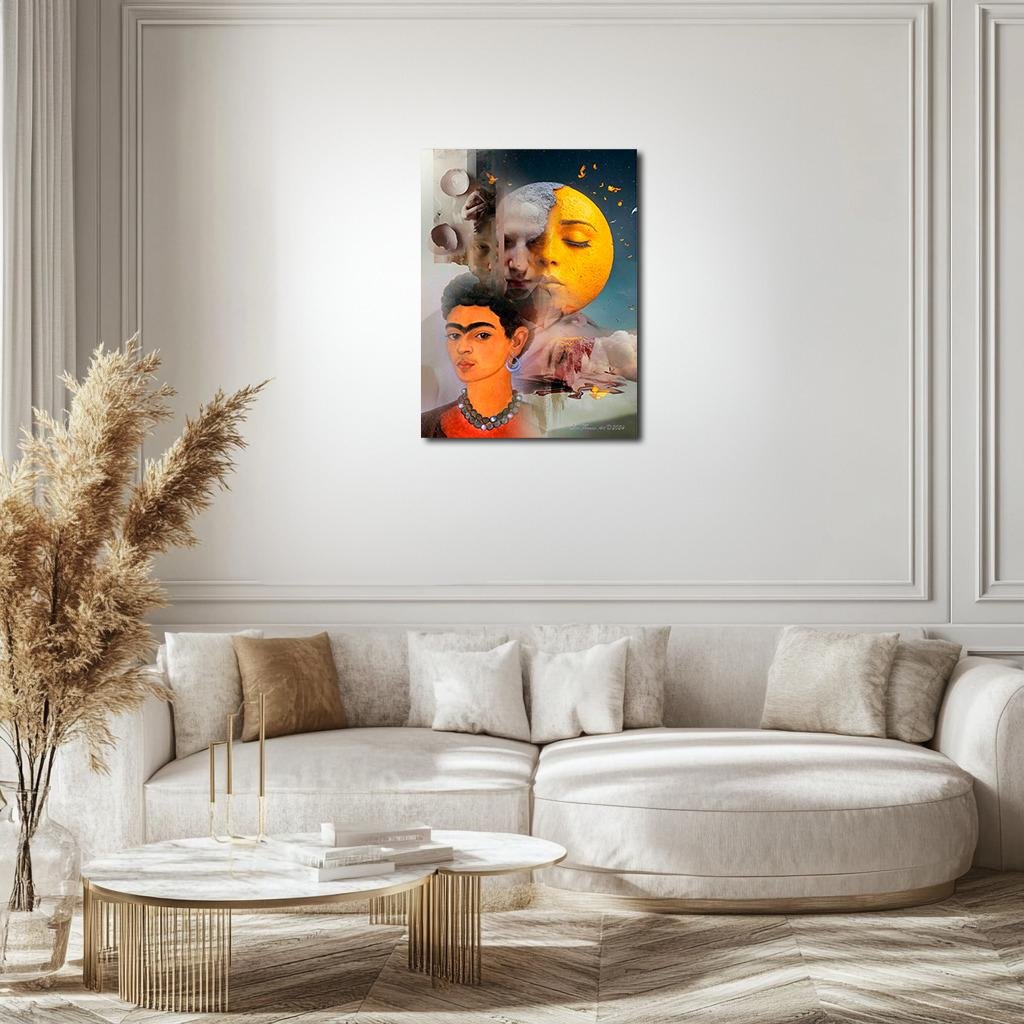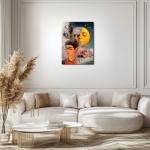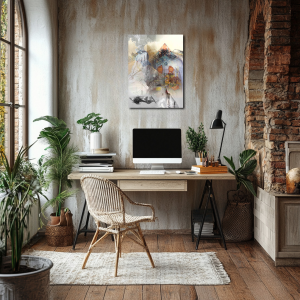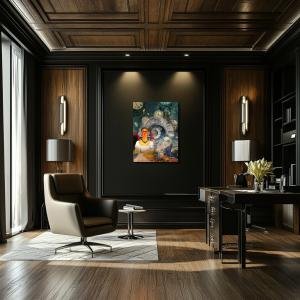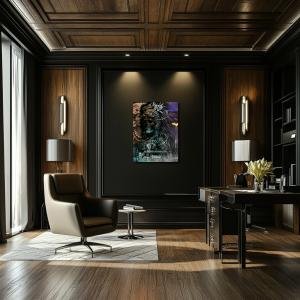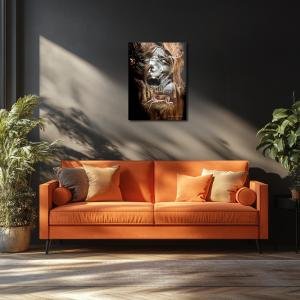Silent Orbits: Frida’s Shifting Suns
Silent Orbits reimagines Frida Kahlo’s Self-Portrait with Curly Hair as a celestial landscape where identity, memory, and transformation swirl in endless cycles. Through sun-warmed ochres, twilight navies, smoky grays, and bursts of golden metamorphosis, Kahlo’s young defiant face becomes the anchor of a universe in motion. In this dreamscape of broken moons and fluttering hopes, the piece honors Frida’s early understanding that to endure is not to remain untouched—but to orbit, break, and bloom anew.
Please see Below for Details…
Hotline Order:
Mon - Fri: 07AM - 06PM
404-872-4663
This conceptual reimagining of Frida Kahlo’s Self-Portrait with Curly Hair stretches her early self-examination into a vast, surrealist cosmos where personal identity spins within broader cycles of creation, erosion, and rebirth. Titled Silent Orbits , the piece frames Kahlo not simply as a young woman asserting herself, but as a celestial force caught in constant transformation—a living planet weathered by the tides of memory, love, and solitude.
At the foundation of the composition rests Kahlo’s familiar young face, crowned with short, neat curls and adorned with a delicate necklace of blue stones. Her expression is poised, unsparing, and almost defiant—an early articulation of the self she would spend her lifetime both defending and deconstructing. Yet here, she is no longer isolated against a plain background; her portrait emerges from a swirling architecture of celestial bodies, broken shells, and faces dissolving into one another.
Above and around her, a fragmented moon-face looms large: half crumbling into chalky ruin, half radiant with the lush, sun-warmed glow of ripe fruit. Its closed eyes suggest the dreaming unconscious, a parallel self that drifts through cycles of decay and renewal. Small golden butterflies scatter from its surface into the deep blue night, evoking the fragile moments of transformation that flutter at the edges of waking life.
The color palette of Silent Orbits is a conversation between opposing emotional states: resilience and vulnerability, permanence and erosion. The base of the composition around Frida’s figure is infused with warm, natural tones—muted terracotta oranges, soft clay browns, and sun-drenched ochres. These earthy shades ground her in the tangible world, emphasizing her early commitment to authenticity and rootedness even as external forces tried to reshape her.
In contrast, the upper celestial realm is painted in colder hues: deep navy, dusky purples, and smoky grays swirl around the cracked face of the moon-woman. These cool colors evoke night, distance, and the isolation of self-reflection. The brilliance of the golden butterflies offers sudden flashes of hope and movement against this heavy twilight, tiny exhalations of transformation against the broader, inevitable tides of change.
Pale, ghost-like hands and faces float through the left side of the piece, rendered in milky whites and soft pinkish grays. Their translucent textures suggest the presence of memory, past selves, and unseen forces—those interior companions who whisper or resist as one tries to define oneself. The broken shells in the background, fractured and delicate, hint at birth and rupture, suggesting that every act of self-creation carries the price of leaving something behind.
Frida’s young skin is painted in tender, luminous tones of apricot and rose, capturing the physical vitality of her youth while underscoring its inherent fragility. Her gaze is set outward, fixed, unflinching. Even as celestial forces swirl around her, her spirit holds steady—a star resisting the pull of dissolution.
When I created Silent Orbits , I wanted to reflect the early moment in Kahlo’s journey where her self-awareness crystallized into defiance, where she recognized that existence would mean constant weathering and that survival would not come from resisting change but from learning to orbit within it. Kahlo’s Self-Portrait with Curly Hair was not a portrait of vanity—it was a quiet rebellion, a declaration of becoming, at a time when becoming still cost her dearly.
The compositional flow spirals gently from Frida’s face upward into the broken moon and beyond into the night, tracing an invisible path of evolution. The cracked textures of the celestial body mirror the fractures she would endure—physical, emotional, artistic—yet the butterflies insist on the persistence of beauty and metamorphosis even amid loss.
In this vision, Frida Kahlo is not simply a young woman freshly emerged into the world; she is already an orbiting force, her gravity bending everything around her into new, painful, and ultimately beautiful forms.
Add your review
Your email address will not be published. Required fields are marked *
Please login to write review!
Looks like there are no reviews yet.

